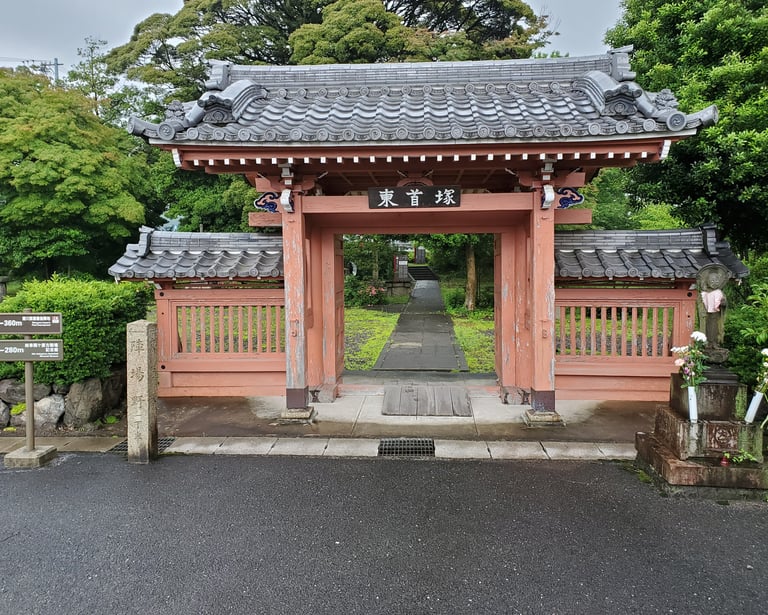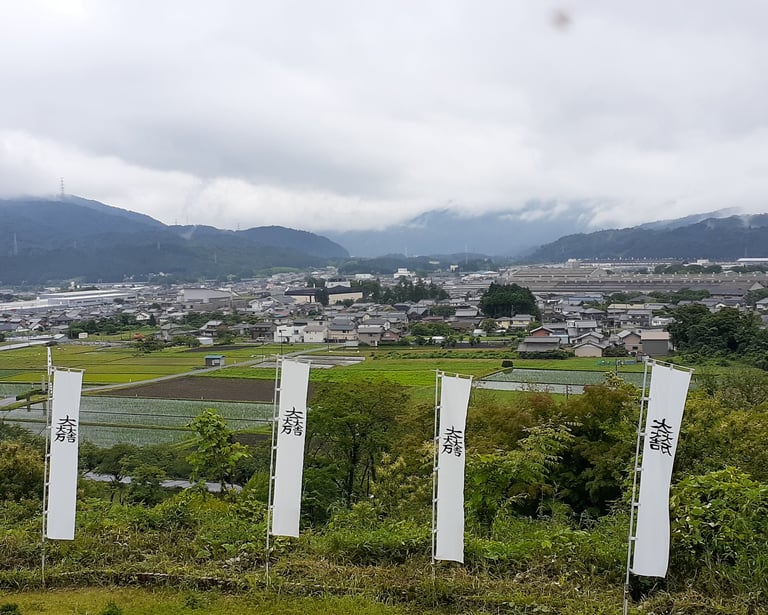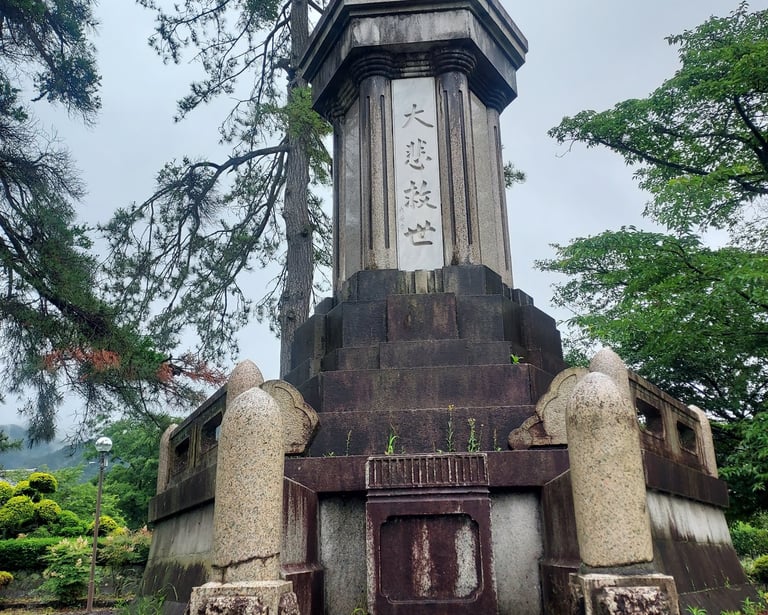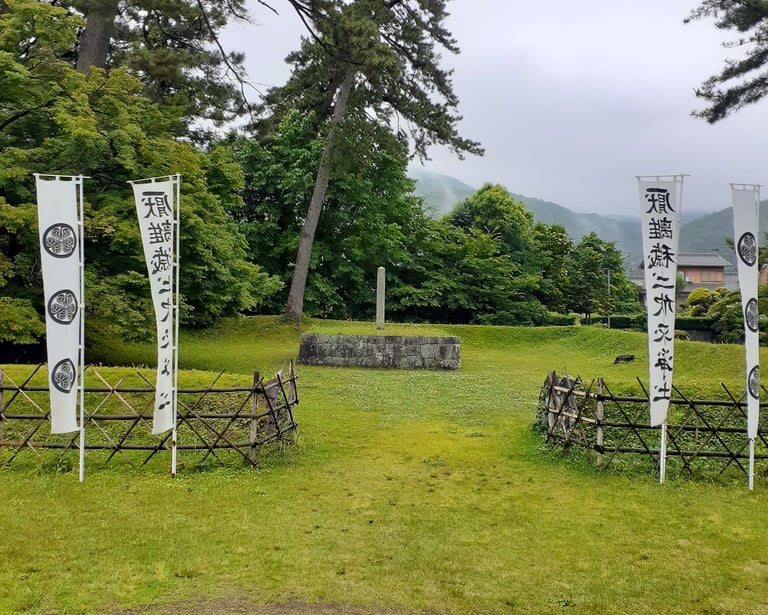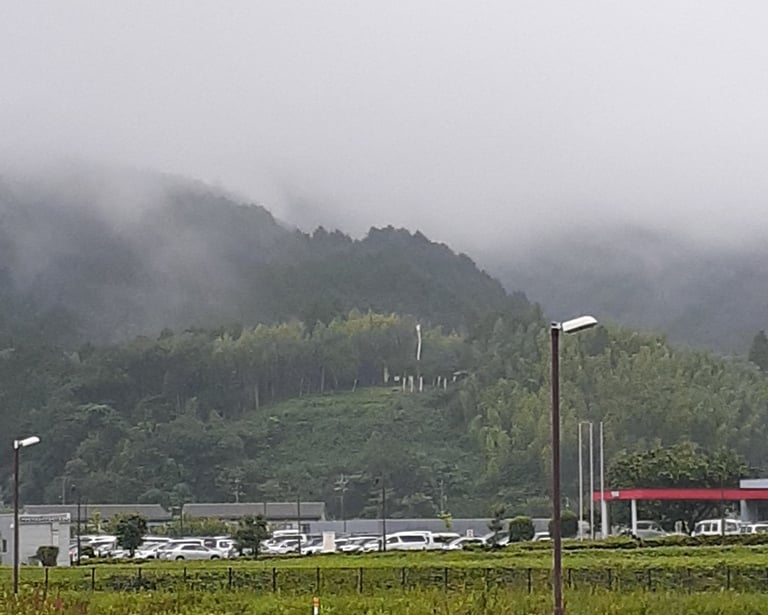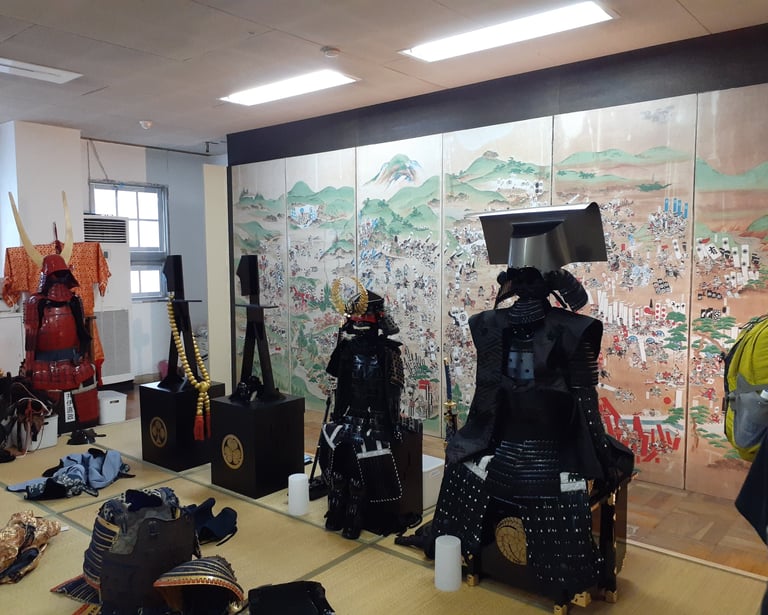What's Stopping You? Change Your Life!
Where Japan Was Decided
Walking the Fields of Sekigahara
WILLIAM
10/15/20254 min read
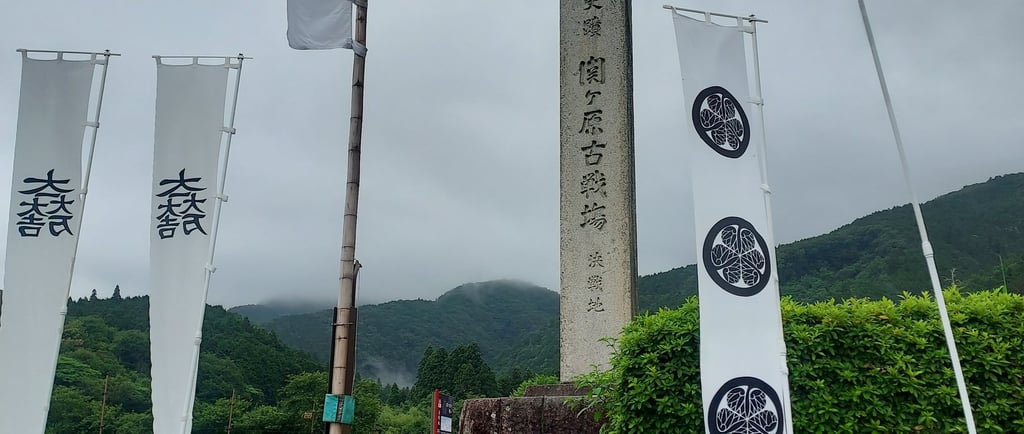

We woke early in Nagoya, the city still damp from the night’s rain. Our stay at the Meitetsu Grand Hotel came with breakfast vouchers — and two diverging plans. Mary and Reaghan decided to make the most of the hotel buffet, a polished spread blending traditional Japanese washoku (和食) with Nagoya’s regional flair. There were local specialties like kishimen noodles, dote-miso beef, and hitsumabushi — grilled eel served over rice, a dish that’s practically Nagoya’s signature.
For international guests, the Western section offered familiar comforts: scrambled eggs, omelets, bacon, sausage, and a full coffee and juice bar.
Liam and I, on the other hand, opted for something more humble — a “salaryman” breakfast. (A salaryman — サラリーマン — is a white-collar office worker, often seen rushing to catch the morning train, eating an onigiri from the konbini.) We walked to a nearby konbini for onigiri, canned coffee, and maybe an egg-salad sandwich. Boss Coffee comes highly recommended — and it certainly delivers a wake-up call.
There was some good-natured debate over who had the better breakfast, but in the end, everyone was happy. It was time to find our train.
To the Battlefield
At Nagoya Station, we followed the signs to the JR Central concourse and the Tōkaidō Main Line (東海道本線). We found Platform 3 — just in time to watch our train depart. That was the 9:31. The next one, thankfully, was at 10:00. Miss that, and we’d be waiting until rush hour at 6:10 p.m. The trip to Sekigahara would take about 55 minutes.
The train was a standard local — clean, quiet, efficient. On Japanese trains, silence is a kind of etiquette. People speak softly, if at all. Phone calls are frowned upon. Even laughter is subdued. The stillness feels almost sacred.
As the train moved through the valley, a storm front gathered in the distance. We wondered aloud if it would reach the station before we did. It did.
Arrival in the Rain
When we arrived at Sekigahara Station, the rain was pouring sideways. We dashed across the platform to a nearby store-slash-museum for cover — and to rent a locker for our bags.
Travel Tip: Don’t drag your luggage around. Japan’s coin lockers are your best travel friend. They’re inexpensive, easy to use, and found in nearly every station, as well as many temples and museums. The museum had several empty ones, and for a few yen, it was a great deal.
Sekigahara Station is small and quiet — the kind of place where you might normally hear cicadas buzzing in the trees. Not today. A group of high school students piled off the next train, laughing and chasing one another through the downpour. Clearly, this was nothing new for them.
From the station, it’s a 10- to 15-minute walk to the Sekigahara Battlefield Memorial Museum and the surrounding plains where Tokugawa and Toyotomi forces once clashed. A town map posted outside showed walking routes to each historic site, with cheerful cartoon samurai pointing the way.
We followed the map into a mist-covered rice paddy. The hills smelled of cedar and freshly worked soil. It was difficult to believe that four centuries ago, this calm valley was anything but quiet. Here, the future of Japan was decided in a single morning.
Echoes in the Grass
Inside the museum, large maps charted the troop movements of the two great armies: Tokugawa Ieyasu’s Eastern Army and Ishida Mitsunari’s Western Army. On October 21, 1600, they met here in one of the bloodiest and most decisive battles in Japanese history.
Japan had been divided by decades of civil war. Ieyasu fought for unity and order; Mitsunari for loyalty to the Toyotomi legacy. By the day’s end, betrayal and fog had shifted the balance. Ieyasu’s banner — the rising sun — stood victorious, and the path toward the Tokugawa shogunate was set.
Historians estimate that between 30,000 and 40,000 men were killed that day out of roughly 160,000 who fought — nearly a quarter of all who took the field.
In a side room, local volunteers were preparing for a festival. They smiled and waved us over, letting my son try on samurai armor. He was delighted to wear the armor of Tokugawa’s army — the heavy helmet, breastplate, and shoulder guards. The museum volunteers seemed equally pleased that a wanderer from another land could be made so happy beneath the shield of Tokugawa’s forces. It was a neat moment — the kind that bridges cultures.
When we stepped back outside, the valley was still and gray. It was hard to imagine the screams, the clashing steel, the chaos that once filled this same air.
The Still Valley
Locals call Sekigahara Japan’s crossroads — not only for its geography, but for its destiny. Every trail seems to lead somewhere else: Kyoto to the east, Nagoya to the south, mountain roads disappearing into the fog.
Four hundred years ago, Tokugawa Ieyasu rode through this same valley, uncertain which way his fortune would turn. Today, travelers follow in his quieter footsteps, pausing where he might have paused, listening to the breath of the still valley — and to the echoes of history that never quite fade.
If You Go
Getting There:
Sekigahara is about 55 minutes from Nagoya Station on the JR Tōkaidō Main Line. Trains run roughly every 30 minutes during the day, though service can thin in the late afternoon. From Kyoto, it’s just over an hour by local train.
Museum:
The Sekigahara Battlefield Memorial Museum is a short walk (10–15 minutes) from the station. Admission is around ¥600 for adults, with discounts for students. Exhibits are bilingual and include large digital battle maps and a panoramic viewing deck overlooking the field.
Walking the Battlefield:
Several scenic walking trails connect key battle sites, including the camps of Ieyasu and Mitsunari. The main circuit takes about two hours. Spring and autumn are ideal, though rain adds its own kind of atmosphere.
Tips:
Bring an umbrella or rent one at the station — weather in the valley changes quickly.
Lockers are available at the station for around ¥300–¥500.
The small café near the museum serves simple lunches and local sweets
